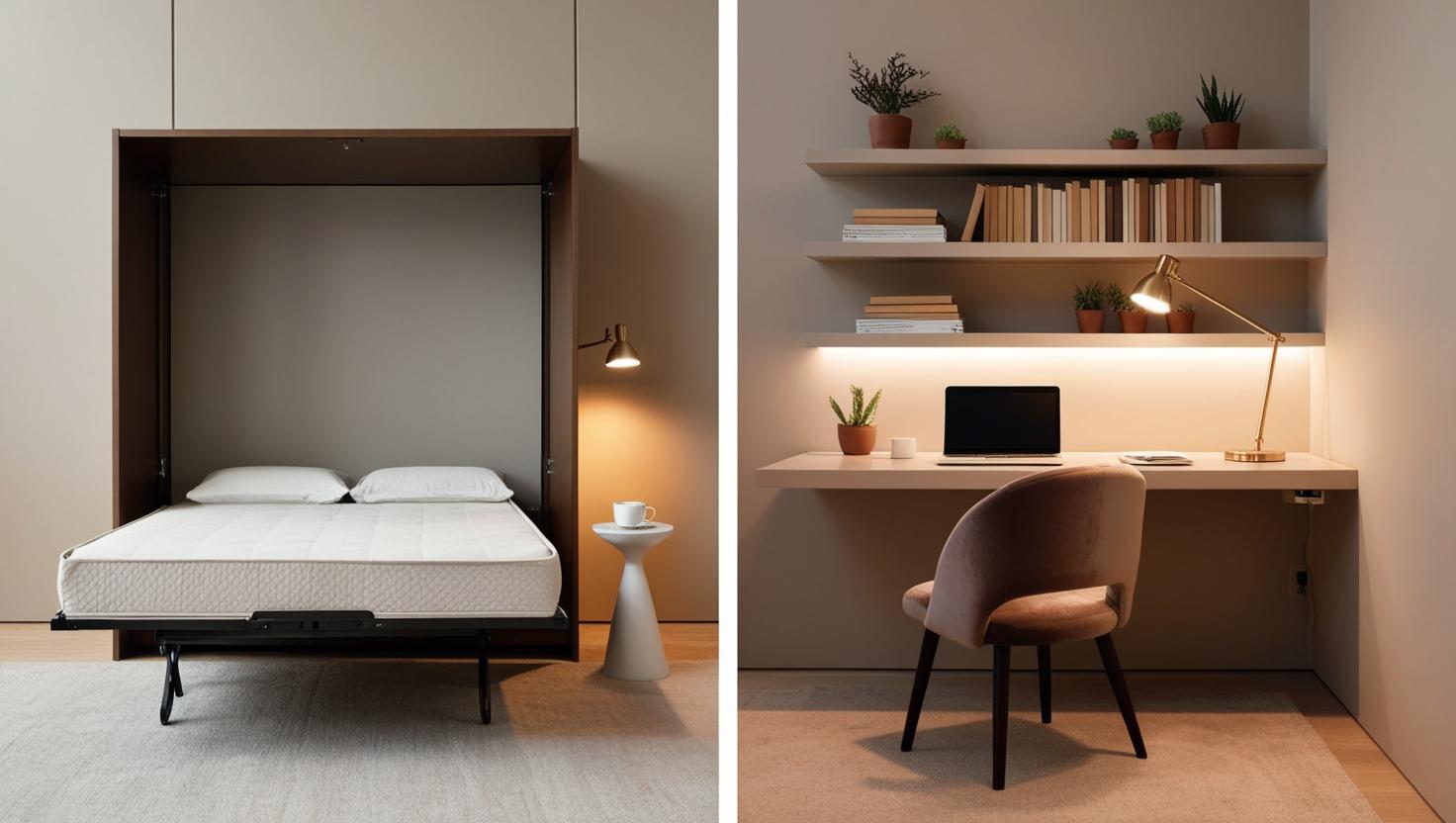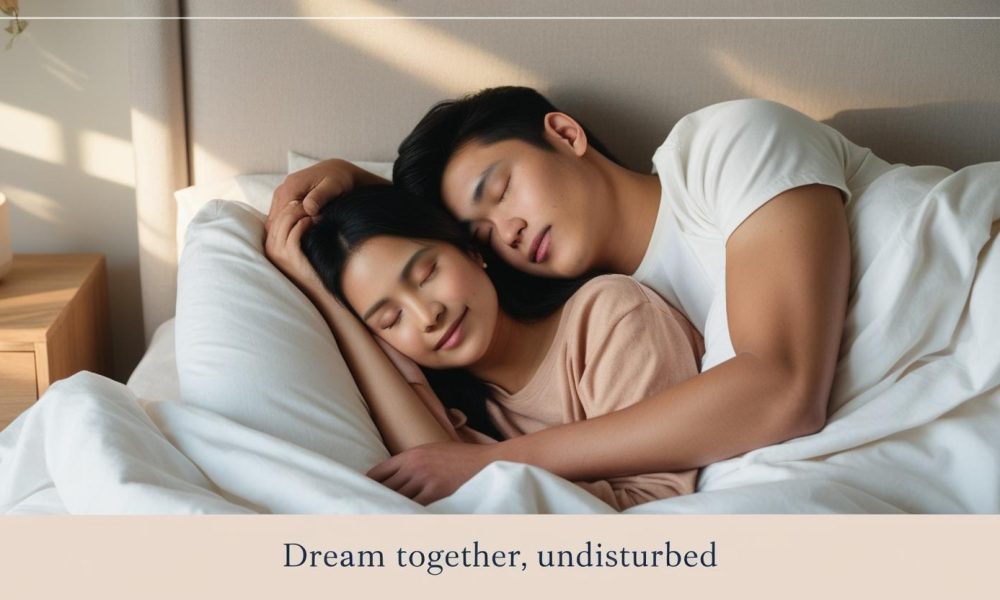Motion Transfer Reduction Ideal for Couples
Motion transfer reduction ideal for couples means you won’t feel your partner’s every move. It’s the easiest way to prevent wake‑ups from tossing and turning—so you both get deeper, uninterrupted rest.
Key Takeaways
Here’s the quick version—what to remember before you shop or upgrade:
- Minimizes sleep disruptions caused by partner movement
- Memory foam is a top performer for motion transfer reduction
- Leads to better mood, health, and relationship harmony
- Helpful for couples with different sleep habits or schedules
- Modern memory foam mattresses solve heat retention issues

Why Motion Transfer Reduction Matters
Shared beds should feel calm, not chaotic. Motion transfer reduction ideal for couples keeps movement localized, so when one person shifts, the other barely notices. The result is better sleep quality and fewer morning grumbles—which is great for health and harmony.
Learn more in Purple’s guide on reducing motion transfer.
How Memory Foam Works Its Magic
In short: memory foam absorbs and isolates movement. That means fewer ripples across the bed and more consistent sleep for both of you.
What Exactly Is Motion Transfer Reduction?
It’s the mattress’s ability to prevent movement on one side from traveling to the other. Traditional springs can behave like a trampoline, while memory foam cradles each sleeper individually—ideal for undisturbed rest.
How Does Memory Foam Actually Do It?
Thanks to viscoelastic properties, memory foam compresses slowly and absorbs energy, stopping motion from spreading. Think of it like built‑in movement‑canceling tech that keeps midnight repositioning from waking your partner.

Top Benefits of Motion Transfer Reduction for Couples
Better motion isolation doesn’t just feel nicer—it pays off in measurable ways: deeper sleep, smoother mornings, and more flexibility around different routines.
Sleep Better Together
Uninterrupted sleep is linked to improved memory, immunity, and mood. The Sleep Foundation explains how quality sleep benefits nearly every system in the body.
Embrace Your Sleep Differences
One of you tosses while the other reads late? Memory foam absorbs both movement and micro‑vibrations so you can keep your own routines. See our guide on
sleeping positions for couples for staying comfy together.
Less Tossing, Less Tension
Poor sleep can fuel cranky mornings. With motion transfer reduction ideal for couples, nights stay calmer—supporting better communication and fewer sleep‑related squabbles.
Choosing a Mattress with Awesome Motion Transfer Reduction
Start with memory foam (or foam‑forward hybrids) and focus on density, thickness, and cooling. These specs matter more than brand hype and will have the biggest impact on your real‑life sleep.
- Density: Higher‑density foam generally reduces motion ripple more effectively.
- Thickness: Thicker comfort and transition layers better absorb disturbances.
- Cooling Features: Look for gel infusions, airflow channels, or breathable covers to prevent overheating.
Our guide to choosing the best memory foam mattress can help narrow your options quickly.
Explore more about how to choose a mattress and memory foam vs. hybrid options if you’re comparing features. If overheating is a concern, read our cooling bedding solutions guide.

Busting Common Myths About Memory Foam
Let’s clear up a few quick misconceptions so you can shop with confidence.
“All mattresses are the same”
Not true. Memory foam stands out for motion isolation—you’ll notice the difference when your partner gets up at 3 a.m. and you don’t.
“Memory foam is too hot”
Modern foams incorporate cooling gels, ventilated layers, and breathable covers to offset heat retention.
“Motion isolation doesn’t matter”
If you sleep solo, maybe. But for couples, motion transfer reduction ideal for couples can be the difference between restless nights and consistently restorative sleep.

When it comes to shared sleep, motion transfer reduction ideal for couples isn’t a luxury—it’s a necessity. Memory foam can bring the extra calm you both deserve, night after night.
FAQ
Quick answers to the questions couples ask most:
- What is motion transfer reduction?
- It’s a mattress feature that limits the spread of movement, letting couples sleep undisturbed.
- Why is memory foam best for couples?
- Memory foam absorbs motion better than springs, making it ideal for minimizing sleep disruptions.
- Can motion transfer reduction improve my relationship?
- Absolutely. Better sleep leads to improved mood, patience, and communication.
- Are all memory foam mattresses good at motion isolation?
- No. Look for high-density, thick foam with cooling features for the best results.
- Do I need motion transfer reduction if I sleep alone?
- It’s less critical solo, but still adds to comfort and quality sleep overall.
Related reading from Cozy Bed Quarters
- How Bed Size and Sleep Quality Are Connected: What You Need to Know
- Enhance Your Sleep with the Right Mattress Toppers
- Types of Mattresses
Other reading we found popular
- Sleep Foundation — Best Mattresses for Couples
- Eachnight — Best Mattresses for Couples
- Our Sleep Guide — Best Mattresses for Couples























